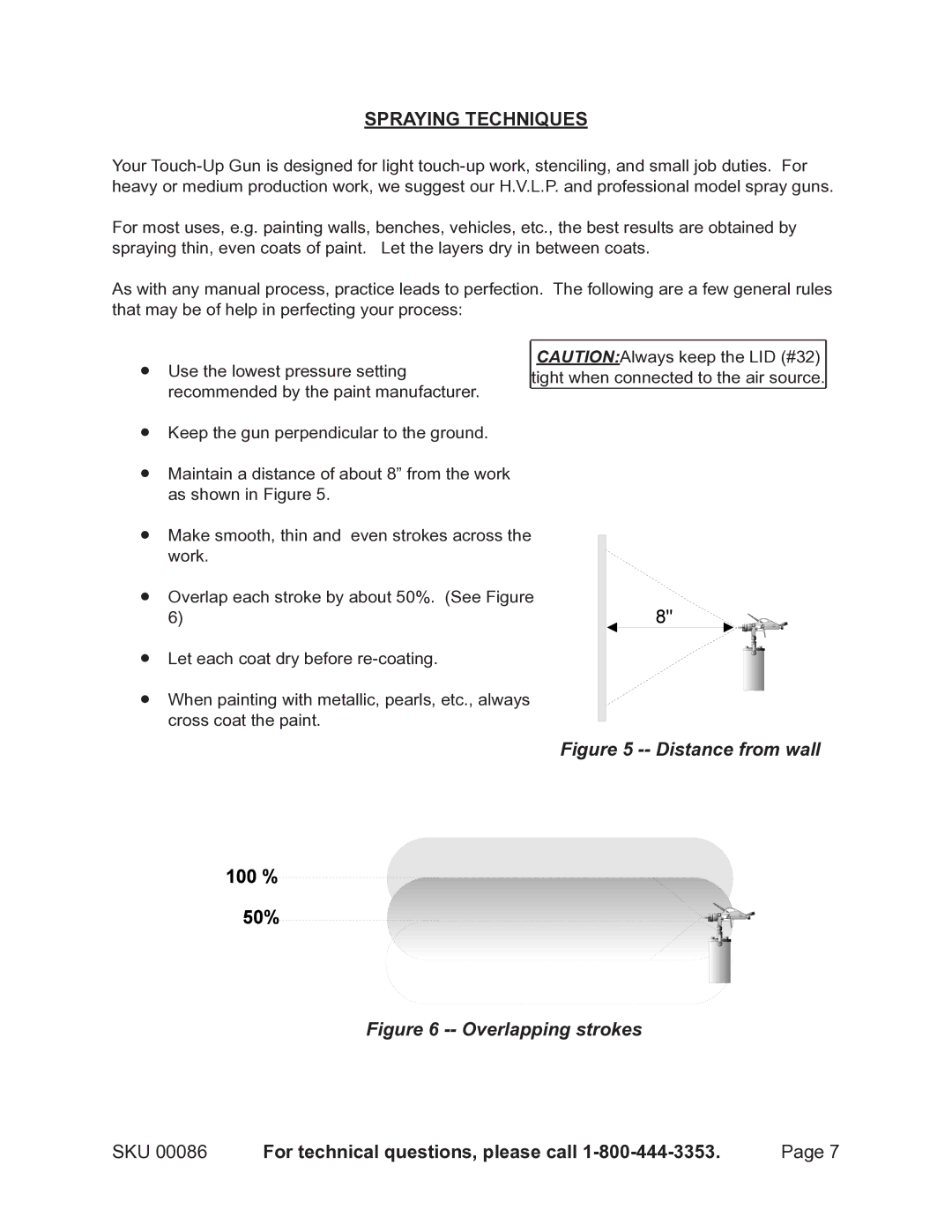
SPRAYING TECHNIQUES
Your
For most uses, e.g. painting walls, benches, vehicles, etc., the best results are obtained by spraying thin, even coats of paint. Let the layers dry in between coats.
As with any manual process, practice leads to perfection. The following are a few general rules that may be of help in perfecting your process:
• | Use the lowest pressure setting |
| CAUTION:Always keep the LID (#32) | |
tight when connected to the air source. | ||||
| recommended by the paint manufacturer. | |||
|
|
| ||
• Keep the gun perpendicular to the ground. |
|
| ||
• Maintain a distance of about 8” from the work |
|
| ||
| as shown in Figure 5. |
|
| |
• | Make smooth, thin and even strokes across the |
|
| |
| work. |
|
| |
• Overlap each stroke by about 50%. (See Figure |
| |||
| 6) |
|
| |
• Let each coat dry before |
|
| ||
• When painting with metallic, pearls, etc., always |
|
| ||
| cross coat the paint. |
|
| |
|
|
| Figure 5 | |
| Figure 6 |
|
SKU 00086 | For technical questions, please call | Page 7 |
